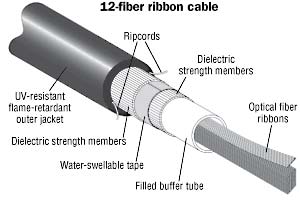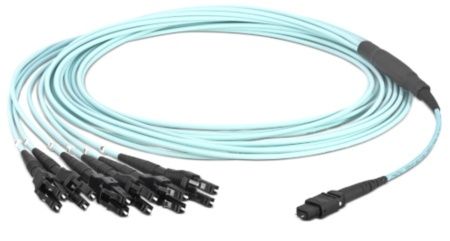The most obvious benefit of the structured trunking system is the large reduction in the number of fiber optic cables under the raised floor. The smaller number of cables makes documenting what cables go where much easier. Better documentation means that tracing a fiber-optic link is much easier during problem determination and when planning for futrue growth.
A less apparent and often overlooked benefit of a structured system is its ability to make future data center growth implementation much easier. With a structured system installed, channels, and control unit I/O ports are connecte by fiber optic trunk cable to patch panels in the CPL. All the connetions between the equipment are made with short jumper cables between the patch panels in the CPL. When new equipment arrives. It is connected to patch pannels in the CPL also. Then, the actual reconfiguration takes place in the CPL by moving short jumper cables between the patch panels, not by moving long jumper cables under the raised floor.
The first FTS implementation solution is called modular panel-mount connectivity. This uses MTP-to-MTP trunk cables to connect to the CPL.
The modular panel-mount boxes are designed so that you can changes the port type in the panel-mount box by unplugging the trunk and changing the modular inserts in the box.
Benefits:
* MTP-to-MTP trunks connect quickly to the panel-mount box.
* The connector type in front of the panel-mount can be easily changed.
* Panel mount capacity can be customized.
The second FTS implementation solution is called coupler plates connetivity. It uses MTP-LC duplex trunk cables to connect to the CPL.
The LC duplex small from factor optical connector is the standard for FTS connectivity, eliminating the need for multiple connector types at patch panels and for patch cables. By standardizing on a connector with a proven history of reliability, the different optical fiber connectors used in equipment do not create a management problem when a system configuration used in equipment do not create a management problem when a system configuration must change. The LC-duplex supports termination of both sizes of multimode fiber and single mode fiber. As a result, CPL patch panel connections and patch cables are easily mangaged and differentiated by their color. There are two key benefits:
* CPC port order at the panel mount is independent of the harness that plugs in at the CPC.
* Single connector type at the CPL
The MTP coupler brackets provide the mechanical support to connect the harness MTP connectors to the trunk cable MTP connector. They are directly mounted on CPC frames.
The maximum density of fiber trunk cables is 144 fiber, which use 12 MTP connectors on the CPC trunk cable end. The trunk cables run under the raised floor and connect the harnesses in the CPC to the panel-mount box in the Central Patching Location.


